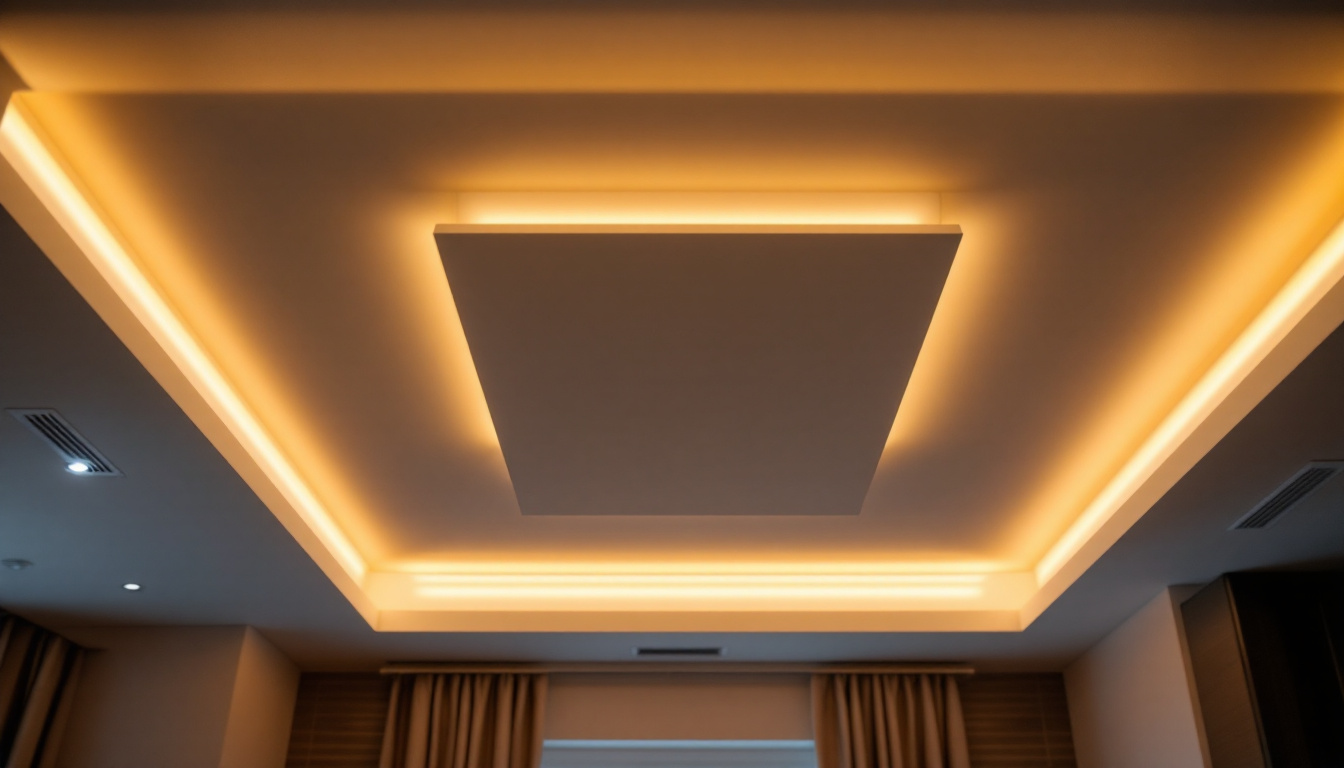
As the demand for energy-efficient and aesthetically pleasing lighting solutions continues to rise, LED tape lights have emerged as a popular choice for both residential and commercial applications. For lighting contractors, understanding the best practices for installing LED tape lights on ceilings is essential to ensure optimal performance and customer satisfaction. This article delves into the intricacies of LED tape light installations, offering insights and guidelines that can enhance the overall project outcome.
LED tape lights, also known as LED strip lights, are flexible circuit boards populated with light-emitting diodes (LEDs). They are available in various colors, brightness levels, and lengths, making them versatile for different applications. Their slim profile allows for easy installation in tight spaces, and they can be cut to fit specific lengths, providing a customizable lighting solution. This adaptability has made them a favorite among DIY enthusiasts and professional contractors alike, as they can be used in a wide range of settings, from residential interiors to commercial displays.
Choosing the right type of LED tape light is crucial for achieving the desired effect. There are several types available, including:
Understanding the specific needs of a project will guide contractors in selecting the appropriate type of LED tape lights, ensuring that the final installation meets both aesthetic and functional requirements. For instance, RGB tape lights can be programmed to change colors, making them ideal for events or spaces that require a lively ambiance, while single-color options might be more suitable for creating a serene and cohesive environment in a home.
LED tape lights offer numerous advantages that make them an attractive option for contractors and clients alike:
These benefits contribute to the growing popularity of LED tape lights, making them a valuable addition to any lighting contractor’s toolkit. Moreover, many LED tape lights are now available with smart technology features, allowing users to control brightness and color through smartphone apps or voice commands. This integration with smart home systems not only enhances convenience but also opens up new possibilities for energy management, as users can schedule lighting to optimize usage and further reduce energy costs. Additionally, the low heat output of LED tape lights ensures safety and longevity, making them suitable for use in areas where traditional lighting might pose a risk of overheating.
Proper planning is essential for a successful LED tape light ceiling installation. This phase involves assessing the space, determining the lighting design, and selecting the appropriate materials. A well-thought-out plan can significantly reduce installation time and ensure that the final result meets the expectations of both contractors and clients alike.
Before installation, contractors should evaluate the area where the LED tape lights will be placed. Key considerations include:
By thoroughly assessing the space, contractors can make informed decisions that will enhance the effectiveness of the lighting design. Additionally, it is wise to consider the room’s color palette and furnishings, as these elements can influence how light is perceived. For instance, darker walls may absorb more light, necessitating a brighter installation to achieve the desired effect. Furthermore, understanding the natural light sources in the room can help in planning the placement of LED tape lights to complement or counteract daylight, creating a balanced atmosphere throughout the day.
The design of the lighting layout is another critical aspect of the planning phase. Contractors should consider the following:
Incorporating these design elements will not only enhance the aesthetic appeal but also improve the functionality of the space. For example, using warmer color temperatures in living areas can create a cozy and inviting atmosphere, while cooler temperatures in workspaces can enhance focus and productivity. Additionally, considering the use of dimmers can provide flexibility, allowing occupants to adjust the lighting based on their activities or mood. Thoughtful integration of LED tape lights with other lighting sources, such as recessed lights or pendant fixtures, can also create a layered lighting effect that adds depth and dimension to the overall design.
Once the planning phase is complete, the actual installation of LED tape lights can begin. Following best practices during this stage is crucial for ensuring a seamless and effective installation.
Before starting the installation, it is essential to gather all necessary tools and materials. This includes:
Having all materials at hand will streamline the installation process and minimize disruptions.
For optimal adhesion, the surface where the LED tape lights will be installed must be clean and dry. Contractors should:
Taking the time to prepare the surface properly will enhance the longevity of the installation.
When it comes to installing LED tape lights, several techniques can be employed:
Adhering to these techniques will help achieve a professional-looking installation that meets client expectations.
When installing LED tape lights, understanding the electrical requirements is vital to ensure safety and functionality. Proper electrical planning can prevent issues such as flickering lights or circuit overloads.
Choosing the right power supply is crucial for the performance of LED tape lights. Key factors to consider include:
Using an appropriately rated power supply will enhance the performance and safety of the installation.
Proper wiring and connections are essential for a safe and efficient installation. Contractors should:
Taking these precautions will help prevent electrical issues and ensure a reliable lighting solution.
After installation, thorough testing is essential to ensure everything functions as intended. This phase allows contractors to identify and address any potential issues before the project is completed.
Upon completing the installation, contractors should conduct an initial test of the LED tape lights. This includes:
Conducting these tests will help ensure that the installation meets quality standards and client expectations.
In the event of issues arising during testing, contractors should be prepared to troubleshoot common problems:
Addressing these issues promptly will enhance the overall quality of the installation and maintain client satisfaction.
To ensure the longevity of LED tape light installations, regular maintenance is essential. Educating clients on how to care for their lighting will help preserve its functionality and appearance.
Clients should be advised on the best practices for cleaning LED tape lights:
Regular cleaning will help maintain the brightness and overall aesthetic of the lighting.
Encouraging clients to monitor the performance of their LED tape lights can help identify any issues early on. Signs to watch for include:
By being proactive in monitoring performance, clients can address issues before they escalate, ensuring a long-lasting lighting solution.
LED tape lights offer a versatile and energy-efficient lighting solution that can enhance any space. For lighting contractors, understanding the best practices for installation, electrical considerations, and maintenance is crucial for delivering high-quality results. By following these guidelines, contractors can ensure that their LED tape light ceiling installations not only meet but exceed client expectations, paving the way for future projects and satisfied customers.
Ready to elevate your lighting installations with the best in LED tape lights? Look no further than LumenWholesale, where we provide contractors with the highest quality, spec-grade lighting products at unbeatable wholesale prices. Say goodbye to local distributor markups and hello to superior lighting solutions that fit your project’s needs and budget. With our extensive selection, free shipping on bulk orders, and commitment to excellence, you can trust LumenWholesale to light up your projects with reliability and style. Don’t compromise on quality or value; visit Wholesale Lighting at the Best Value today and discover the difference for yourself.

Discover how choosing the right power cords can significantly cut expenses for lighting contractors.

Discover the latest advancements in modern light switches tailored for lighting contractors.
Discover why LED garage lighting is becoming a crucial element in the lighting industry.

Discover the essential steps to changing a ballast on a fluorescent light and explore five compelling reasons why lighting contractors should prioritize this skill.